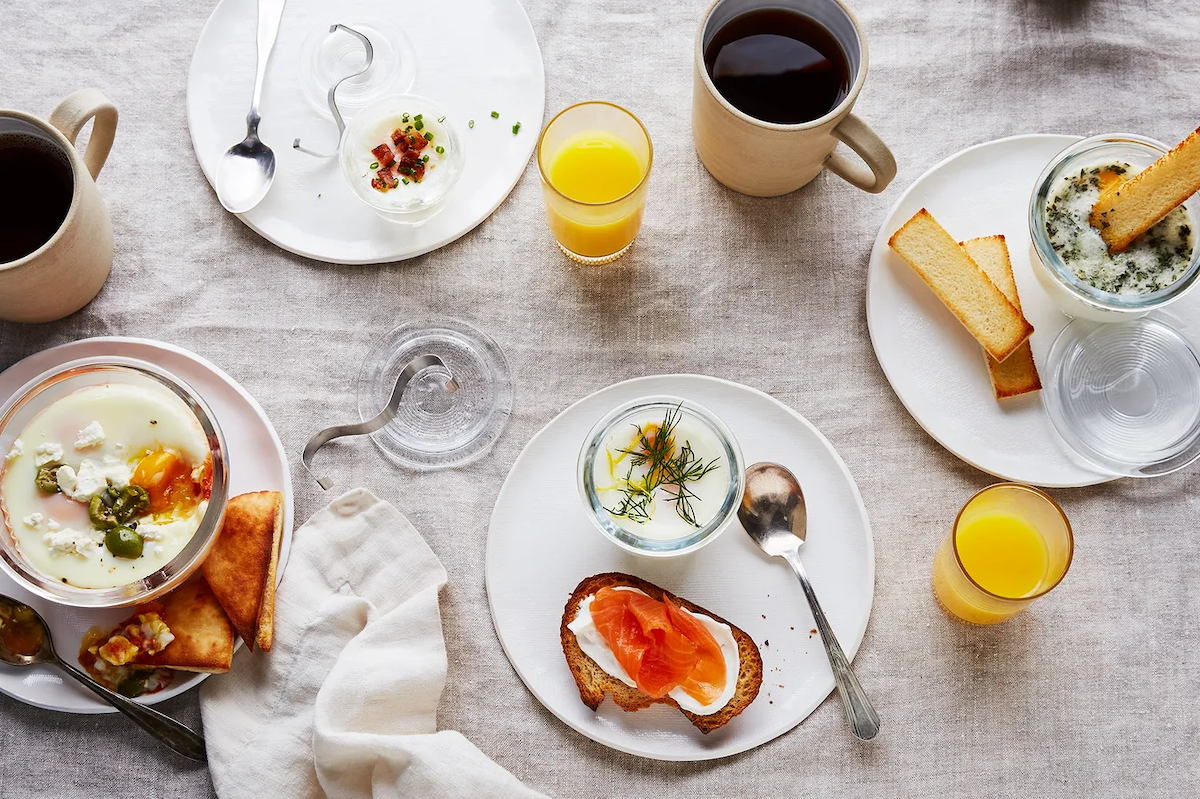I've been trying to spread the gospel of coddled eggs to friends, coworkers, acquaintances — really, anyone who will listen. But I keep getting a similar response along the lines of, "What on earth is that?"
I'll give you the short answer first: A coddled egg is simply an egg gently cooked in a ramekin-like container (outfitted with a screw-on lid) in a pot of simmering water. Safely nestled in their individual vessels, the egg gets cooked by what is essentially a warm bath.
The truth is that coddled eggs have a somewhat cloudy history. According to Royal Worcester, a centuries-old British porcelain producer famed for its egg coddlers, there's no record of who exactly invented the technique. All we know is that by the late 1800s, coddled eggs were a popular dish found across Europe.
Throughout the 1940s, my grandmother on my dad's side ate coddled eggs in British-colonized Burma, now known as Myanmar. Across the globe and decades later, he often made the same dish for weekend breakfasts in our Los Angeles home (served with meticulously cut toast "soldiers" for dipping, of course). After recently receiving a set of coddlers much like the ones that I grew up eating from, my love for this often-overlooked egg preparation was revived.
Based on my description, you may be thinking, "Hey, these sound a lot like a poached egg." And you wouldn't be entirely wrong. But here's the thing: Because each coddled egg is a self-contained, sealed unit, you can cook said egg with any number of toppings and add-ins. I'm talking chives, cheese, smoked salmon, mushrooms, crumbled bacon, leftovers from last night's dinner — the possibilities are endless.
To make coddled eggs, you'll need, as the name suggests, an egg coddler. I'm usually against kitchen gear that only serves one super-niche purpose (looking at you, garlic press), but I'll make an exception in this case. Personally, I'd recommend scouring Ebay, Etsy, and other secondhand sites for vintage ones made by Royal Worcester. Not only are they durable and available for a reasonable price, each one features an adorable illustration (fruit, flowers, and birds are popular motifs). They're distinctly unfashionable and fashionable at the same time, which, to me, is part of the appeal.
It's worth noting that similar results can be achieved by slow cooking your eggs, whether in their shells in an immersion circulator (as explained in this helpful piece from Serious Eats), in a ramekin or mason jar over simmering water, or in a dedicated egg-poacher. These are all great options for yielding a tender, buttery egg if you don't have — or can't get your hands on — a coddler.
Once you've acquired your cooking vessel, it's time to make some eggs. Start by generously buttering the inside of the coddler, then add a cracked egg. Top with some grated cheese — I often use Gruyère or aged cheddar, but I bet a creamy cheese like Boursin would also be delicious — herbs, and anything else you have lying around. Screw on the lids and submerge your coddlers in a pot of barely-boiling water for about seven minutes (many sources say not to submerge the coddlers completely, but I find this results in unevenly cooked eggs). Using tongs or another tool to grab them, carefully remove the coddlers from the water, wrap them in a clean dish towel, and use said towel to help you remove the lids.
It may take a few tries to get the timing right, but the end product will be worth it: a creamy, buttery yolk, fully-set whites, and toppings scattered like tiny treasures throughout the cup. And, of course, strips of buttered toast on the side. Can it get any more coddled than that?




Shares